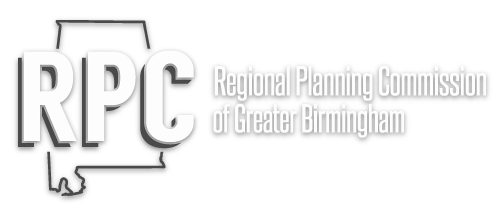Comprehensive Planning Services
What is Planning?
Planning is the discipline which deals with the distribution of urban, rural or suburban functions spatially, in terms of activity patterns of people in the physical setting. This includes the physical facilities or improvements to the land which are made to accommodate these activity patterns. Urban, rural or suburban functions addressed in planning are broad, encompassing land use; transportation; housing; open space and recreation; public and human services; and conservation of environmental and heritage resources.
RPCGB Community Planning Services – May 2018 Presentation
What is a Comprehensive Plan?
A Comprehensive Plan is meant to be a living document that focuses on a city’s overall vision and expectations for future growth and development. It provides a framework for guiding public and private investments that will affect new development as well as reinvestment in existing neighborhoods, major corridors and downtown areas. A Comprehensive Plan is based on the residents’ vision of how they want their city to grow in the future. It is a long-term vision – for the next 10 years, 20 years, or an even longer period of time. A Comprehensive Plan is used for guiding decisions regarding the efficient delivery of public services, cost-effective public investments, how to minimize potential land use conflicts and how to manage growth in an orderly fashion.
Comprehensive Plan Elements
Existing Conditions Assessment – A “snapshot” of existing conditions and trends in a city including a demographic summary, existing land use and zoning, an assessment of the environmental features (hydrology), cultural and historic resources, the transportation system, utilities and infrastructure and community facilities and services.
Market Analysis – An overview of the current and emerging employment and demographic trends associated with a city’s retail, industrial, office and housing markets.
Vision Statement – The vision statement describes the future that the citizens collectively aspire to achieve for their city years from now. The Vision Statement represents the “destination” to the Comprehensive Plan’s roadmap.
Public Involvement Summary – A summary process of the public outreach methods used throughout the development of the Comprehensive Plan, such as the project website, social media, community visioning surveys, stakeholder interviews, advisory groups, public meetings, etc.
Future Land Use Plan – Illustrated by the Future Land Use Map, the Future Land Use Plan is intended to guide future zoning and land use decisions. A description of the future land use categories, along with other elements such as gateways and priority redevelopment areas might also be provided.
Plan Elements – The plan elements are broken down by topics, such as community renewal, housing and neighborhoods, economic development, transportation and mobility, public services and infrastructure, recreation and open space. Each of the topical chapters include recommended goals and actions.
Implementation – The implementation chapter includes a detailed implementation matrix for the Plan’s goals and actions, and describes potential financing and investment tools and potential funding sources.
Comprehensive Plan Implementation Tools
Zoning Ordinances Land use regulations enacted by a city/town to create districts or zones that establish permitted and special uses within those zones.
Subdivision Regulations Written documents which describe the review procedure and the minimum design and submittal requirements for creating a subdivision.
Current Plans In Progress
Downtown Homewood Master Plan – www.HeartofHomewoodPlan.com
Birmingham Framework Plans – www.ImagineBham.com
Chelsea Highway 280 Overlay District – www.PlanChelsea.com
Recently Completed Comprehensive Plans
Alabaster Comprehensive Plan Update 2016 – www.AlabasterForward.com
Irondale Comprehensive Plan 2016 – www.IrondaleontheMove.com
Center Point Comprehensive Plan 2017 – www.CenterPointComprehensivePlan.com
Planning Techniques
Complete Streets Safe, comfortable and convenient travel via auto, foot, bicycle and transit. Visit: www.completestreets.org
Main Street An approach to some commercial district revitalization; an innovative methodology that seeks to combine historic preservation with economic development. Visit: www.mainstreet.org
Smart Growth An approach that is town-centered, transit and pedestrian oriented, and has a greater mix of housing, commercial and retail uses. It also preserves open space and many other environmental amenities. Visit: www.smartgrowth.org

